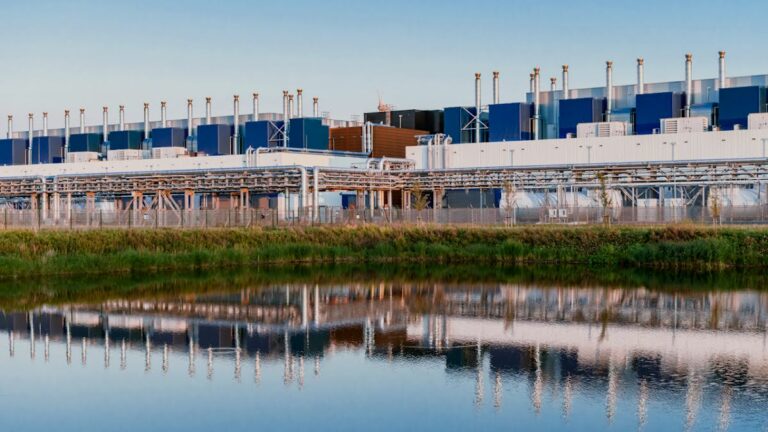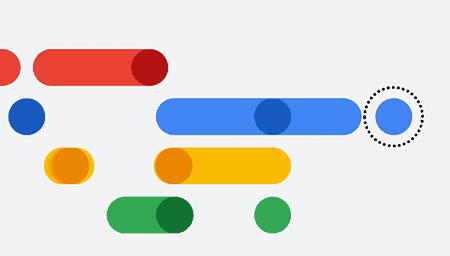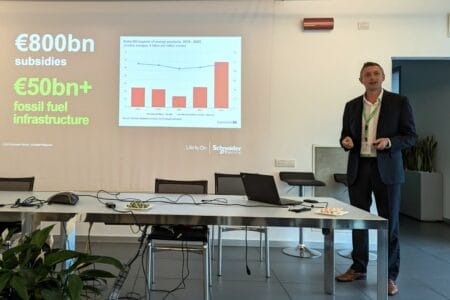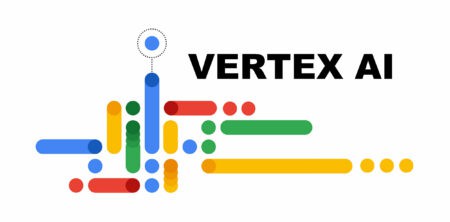To cool data centers efficiently, water is used, a lot of water. This has caused a stir on more than one occasion. Fortunately, it has also caused the biggest players in the market to promise to be water neutral by 2030. Google is the first player to fully transparently report its water consumption and invest heavily in water management. They eventually want to be more than water neutral and give back 120% of their water consumption.
Big players like Amazon Web Services, Microsoft and Google have promised to be water neutral by 2030. Specifically, they want to give back more water to the environment than they use. It’s somewhat the same promise as around emissions for CO2 and the use of green energy. Many large IT organizations are aware of their impact on nature and have set goals to improve. The use of drinking water is not on the radar of many organizations, but that is slowly starting to change.
Shortage of drinking water
More and more countries are experiencing a shortage of clean drinking water. Clean drinking water has never been a certainty in Africa and South America. Water management is much better in Europe and the United States, but due to climate change, there are water-shed problems in certain regions. These problems are expected to increase in the coming years. Many countries are already looking at which bulk users can be shut down, should the drinking water supply to citizens be seriously endangered.
As a result, organizations that use a lot of drinking water are under fire. Not always justified, because years ago it was quite normal to use drinking water for many applications, including cooling. That is now changing. Google is one of the organizations with a significant challenge to become water neutral but is eager to talk about it and be transparent about it. We spoke with Ben Townsend, Head of Infrastructure Strategy at Google, and Maurits Blok, Regional Head of Data Center Public Affairs at Google EMEA.
How Google is adapting its data center cooling
Many Google data centers are currently still cooled with potable water. That should no longer be the case by 2030, when Google plans to use primarily other water-based cooling methods. The intention is to switch to other water sources such as industrial, sewage or seawater. In addition, Google is looking for solutions where it can then pass on its used cooling water to companies that need fresh (non-potable) water, for example, water to irrigate land with.
Examples in Europe
To get alternative water sources, Google has to make local investments and cooperate with regional companies. Good examples of this can be found in the Netherlands and Belgium. In both countries Google uses industrial water from which metals and organic materials have been filtered to cool Google data centers. The Google data center in Eemshaven opened in 2016 and used drinking water for the first few years. It was then decided to partner with North Water, a specialist in industrial water, to build a 28 kilometer pipeline. This pipeline runs from an industrial park in Groningen to Eemshaven to bring industrial water to the data center. Now almost the entire data center is cooled with industrial water. In Eemshaven, Google used 1.26 billion liters (334.7 million gallons) of industrial water and 7.5 million liters (2 million gallons) of drinking water in 2022.
Google’s data center in Belgium also primarily uses industrial water for cooling. In 2022, Google used 1.39 billion liters (368.2 million gallons) of industrial water and 53.75 million liters (14.2 million gallons) of drinking water for its Belgium data center.
In Finland, Google developed a very innovative data center in an old paper mill. The necessary basins for paper production were already there. In Finland, Google uses seawater to cool the data center, the water is then put into the basins to cool slowly, so the temperature difference is minimal when the water flows back into the sea.
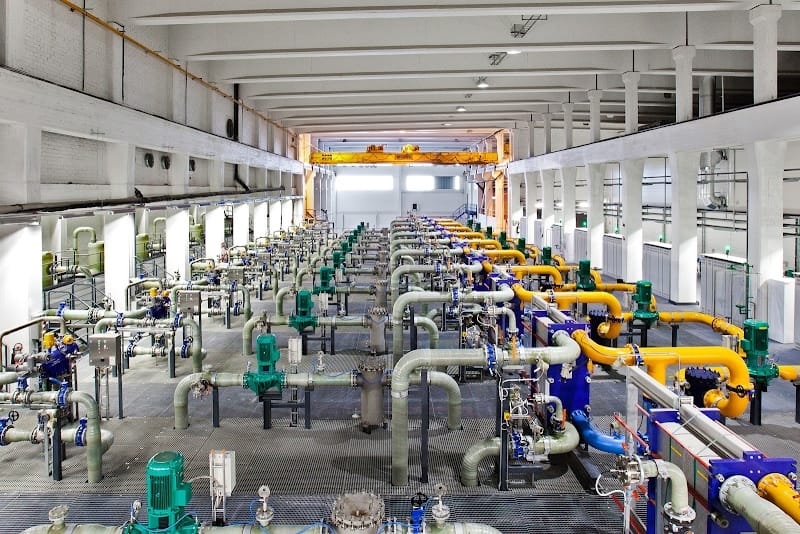
Still a long way to go
Google now uses 25% alternative water sources, i.e. industrial or seawater. That means the remaining 75% is still potable water. To be precise, it is 5120.6 million gallons of potable water (19.38 billion liters) and 1501 million gallons of water (5.38 billion liters) from other sources, such as sewage, industrial or seawater. So in total, Google uses 6621.4 million gallons (25 billion liters of water) to cool its data centers. To put that in perspective, according to various sources, the average citizen uses between 40,000 and 50,000 liters of drinking water per year. So Google’s total consumption is equivalent to 500,000 to 625,000 people.
In total, Google has given 271 million gallons (1.03 billion liters) of water back to the community. That water has been used, for example, to spray farm land. That can be used cooling water, but also water that was filtered but ultimately not needed for cooling. Google has investments underway in 23 projects where water is purified and can eventually be returned to the local community. In 2022, it was 1 billion liters, when all these projects are finished, it should replenish nearly 5 billion liters of water annually.
Google will continue to invest in more water projects in the coming years to eventually be able to give back at least 120% of its total water consumption to the community.
Treating drinking water responsibly
In an ideal world, companies would probably no longer use drinking water for cooling. However, that is not the reality. In Google’s case, it is unlikely to happen either. According to Google, it is essential to analyze the watershed in an area to determine how much water there is, how much water is needed for the population and what can be used for other uses, such as industry. Of course, alternative water sources such as industrial or wastewater also play a role. If alternatives are available, it is better to use those.

However, there are situations where there is more than enough drinking water available, but there is no wastewater or other alternative. In those situations drinking water remains the primary source for cooling. Water cooling is 10 percent more energy efficient and has 10 percent less carbon emissions than air cooling. This is Google’s conservative estimate; water cooling is even more economical in warmer climates.
While water cooling is preferred, it is not always possible. In Arizona, Google uses air cooling in its data centers because there is not enough drinking water, nor is there any industry or wastewater in the vicinity. Ultimately, it’s about finding the most optimal cooling method. Arizona has a warm climate with a lot of sunshine, so solar energy is used to offset a lot.
Helping governments and organizations with water management
For every data center that Google now opens, very complex calculations are first made about the watershed in the area. They also look directly at alternative water sources and the best cooling method now and in the future. These are methods that Google has developed in recent years. You don’t want to open a data center in an area where you won’t be able to cool it in a few years.
In Western countries, Google does not have to do these kinds of calculations by itself. There it can rely on the calculations of the local government because they have a lot of water knowledge and have water management in place. In other parts of the world that is not always the case, which is why Google does those calculations. It also shares all that information and knowledge with local organizations and authorities so they can improve water management.
More transparency desired
Google has taken the step to publish its water consumption. We could also speak to them at length and now explain their progress and how they are proceeding. We hope that more large IT companies and data centers will start providing insight into their water consumption. It’s also valuable for the regions in which they are active. This also applies to other industries. It may help parties to find each other and work better together. One company has wastewater it needs to get rid of, a company like Google needs wastewater for cooling. If they happen to be located near each other, they can work together and re-use the water.
Is cooling even necessary?
Some people may wonder if cooling is needed at all in data centers? Unfortunately, it is not optional. The fact is that server hardware lasts longer if the temperature is controlled. Townsend revealed on this subject that Google did raise the temperature. In Google data centers, they currently maintain the temperature at 26 degrees celcius. Many data centers used to be a lot colder. In addition, there is a trend that the amount of compute per rack increases every year, and with it the production of heat. Therefore, we can assume that more cooling will be needed in data centers in the future and not less. The fact that large organisations are working on becoming water-neutral is therefore essential.
Also read: Google plans new Belgian datacenter in La Louvière
